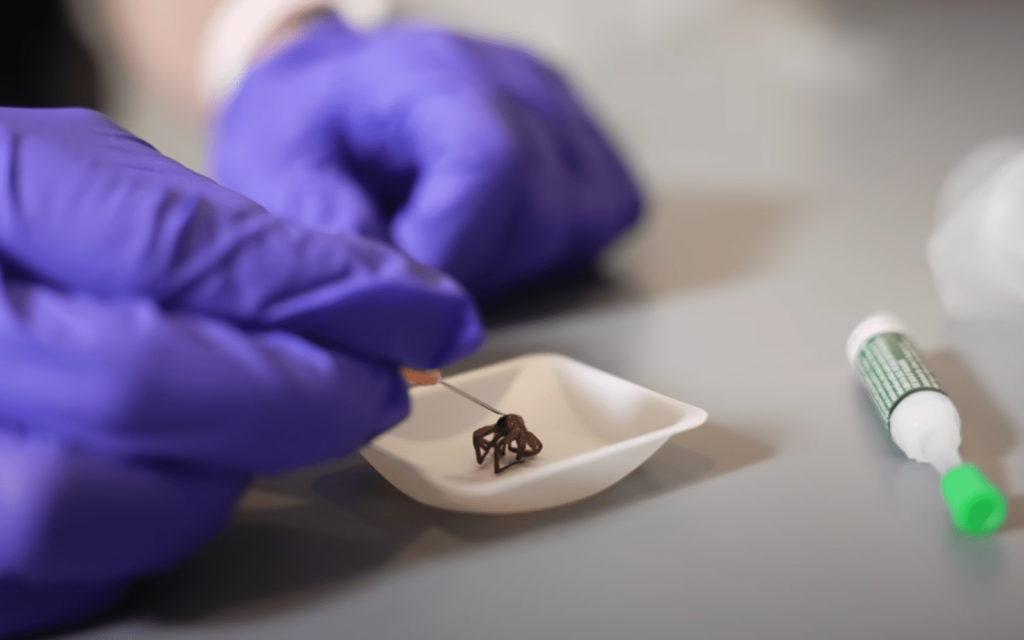Soft robots are, perhaps obviously, robots built from a softer material than metal. But, as researchers from Rice University have shown, these robots can still be pretty metal. Called ‘necrotic grippers’ by the team who figured this out, researchers have turned dead spiders into robot hands.
Which is, amazingly, easier than you would expect. Everyone’s seen a dead spider at some point. Provided you didn’t flambe the critter with an improvised flame-thrower, you’ll have noticed that its legs curl up against its body. It’s this property that turns it into a surprisingly capable robot hand.
Necrobotic airs
It turns out, spiders use hydraulics in order to keep their legs functioning. When they’re dead, that hydraulic pressure is absent, leading to that curled-up posture. What if you stuck a syringe of air into the back of one of these and used it to pick up objects?
If the question never occurred to you, you’re probably not a mechanical engineer at Rice University. Poking a needle into the prosoma chamber, the bit inside the spider that helps regulate leg motion turns it into a necrobotic gripper. The wolf spiders the research team used could reliably lift 130% of their own body weight. That’s not much if you’re using a 30-gram spider. But what if you scaled it up to the 175-gram Goliath Birdeater? Think of the scientific potential.
And there was some serious science happening to these spider corpses. The burgeoning field of necrobotics (robotic corpses, we guess) has seen at least one spider clear more than 1,000 open and close cycles.
Assistant professor Daniel Preston explained, “It starts to experience some wear and tear as we get close to 1,000 cycles. We think that’s related to issues with dehydration of the joints. We think we can overcome that by applying polymeric coatings.”
What’s the point of a necrobotic robot part, though? Well, these are naturally-occurring components. They’re renewable, biodegradable, and fairly easy to set up. And they can be used to trap other bugs for… research purposes, apparently. Small-scale, fine sorting or assembly might also be possible applications using the unusual line of research.




